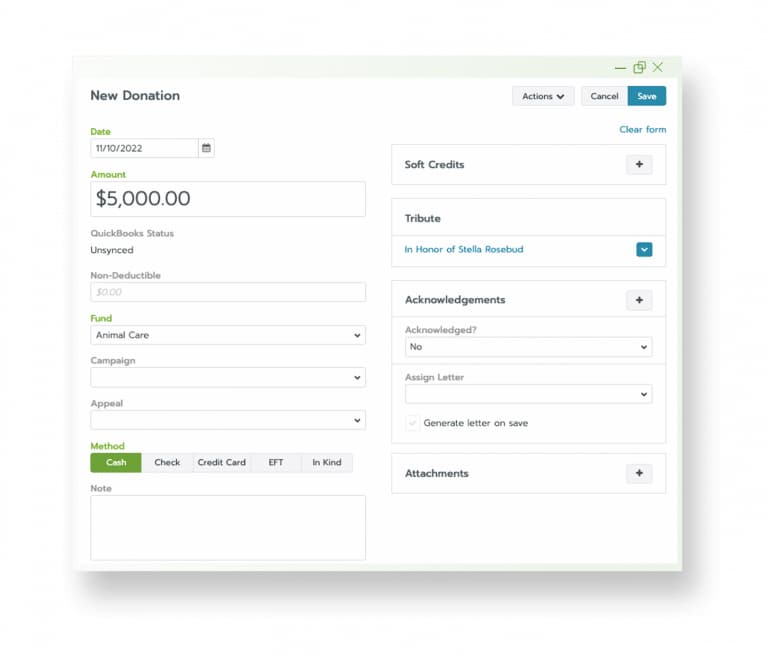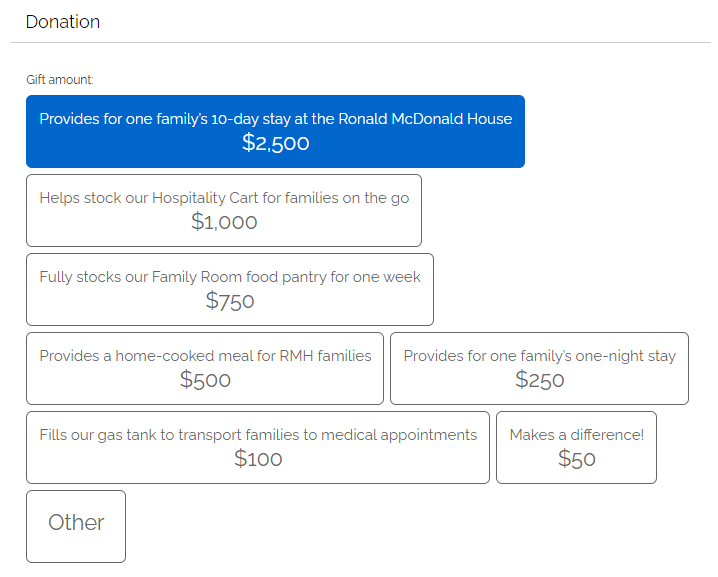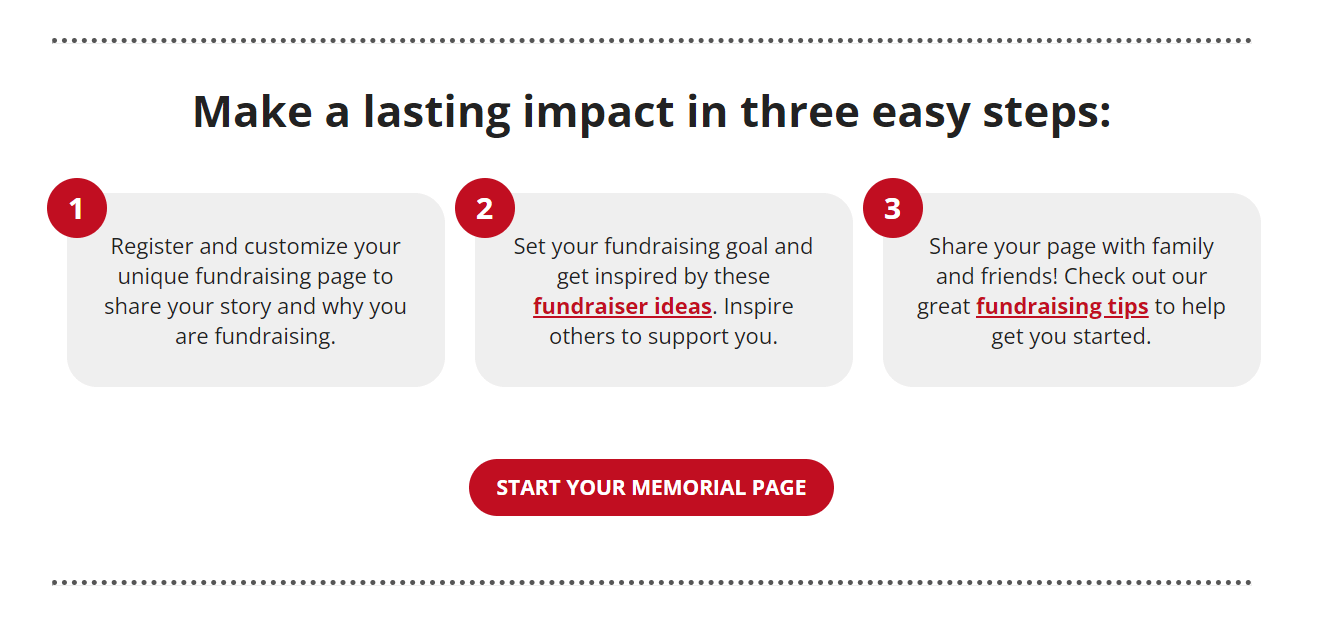Contributing memorial donations is a meaningful way to honor someone’s life after they’ve passed away. Memorial contributions help foster positive change in the wake of loss.
Your nonprofit should have a clear strategy for managing memorial donations and building relationships with donors and the family of the deceased. When you can build relationships with families, friends, and donors, you can strengthen your nonprofit’s community and foster more legacy giving in the future.
Managing memorial donations requires sensitivity and thoughtfulness. We’ll cover the special steps you should take in the following sections:
Let’s start by taking a closer look at what memorial donations are and who they come from.
8 tips for managing tribute and memorial donations
When your nonprofit receives memorial gifts, it’s important to respond thoughtfully and communicate openly with both the family of the deceased and donors. Follow these tips to better manage tribute and memorial contributions:
1. Involve the honoree’s family.
To begin the tribute-giving process, the family of the deceased may reach out to your nonprofit to let you know that you will be receiving gifts in honor of their loved one. If they don’t, use your donor management system to look up the name of the deceased and see if you have any contact information for a family member of theirs.
Once you’ve made contact with a family member or close friend, ask who the main point of contact or representative from the family will be. Also, determine what their preferred method of contact is, whether emails or phone calls.
You can also ask if the family would like to share information about their loved one via social media posts, emails, or blog post updates from your nonprofit. This can be a great way to show gratitude for the individual and the donors who are giving on their behalf.
Be sure to also send the family representative a memorial gift acknowledgement message to recap the donations that you’ve received in memory of their loved one. Using a robust donor management system like Bloomerang, you can easily automate tribute gift notifications by pulling data directly from your donor database. This allows you to share your condolences, acknowledge gifts, and notify the family about who has donated in honor of their loved one. Bloomerang’s tool allows your organization to:

- Save time by automatically creating tribute notification letters using a template.
- Customize letters with a personal note.
- Track relationships between donors and the family representative.
Keeping loved ones involved through every step of the memorial donation process helps create a positive experience and strong, long-lasting bonds.
2. Allow donors to send a note to the honoree’s family.
Enable memorial donors to send a personal note to the family of the person who has passed. You can allow donors to choose from pre-made e-cards or give them the option to type a short, personalized message.
For example, take a look at how the Michael J. Fox Foundation provides the option to notify the family after making a memorial donation:

The online donation form allows donors to choose from an e-Card or printed card that will be directly sent to the family. This provides an easy way for donors to share their condolences.
3. Send thoughtful donor thank you notes.
Send heartfelt, personalized thank you messages that recognize how meaningful memorial gifts are to your organization.
After someone submits a memorial donation using your online donation page, send an automated thank you message and donation acknowledgement. This message should be personalized with:
- The donor’s name
- The gift amount and date
- The name of the person they were honoring with the donation
Make sure this thank you note is different from your thank you message for general online donations. The message should recognize that the donor is submitting a gift to honor someone’s life, not just to support your organization.
4. Communicate the impact of tribute donations.
Your donor thank you notes and memorial donation page should describe exactly what your nonprofit plans to do with the memorial donations you receive. Make it clear that the individual’s legacy and positive impact will carry on throughout your organization’s work.
Share the impact of donating at different levels on your donation page. For example, look at how Ronald McDonald House Charities highlights the impact of different gift amounts:

The page highlights that a $2,500 donation sponsors a 10-day stay for a family at the Ronald McDonald House, a $1,000 donation helps stock a hospitality card, and other influential donation amounts.
Showing donors that you plan to put memorial gifts to good use can help foster trust among these new audience members who may be less familiar with your organization. They’ll see your nonprofit as transparent and reliable, which may encourage them to donate again in the future.
5. Keep memorial donation data organized.
Create a segment in your donor database specifically for those who have contributed memorial donations.
These donors may have just heard about your nonprofit for the first time and don’t have any other personal connection to your organization. Avoid overwhelming them with traditional fundraising appeals and other ongoing messages that your organization sends.
Instead, craft tailored outreach messages to thoughtfully and respectfully stay in touch with these individuals. For instance, you might reach out with information about how your organization used memorial donations. You can also reach out with a message of gratitude on the anniversary of the donor’s gift.
Stewarding memorial donors by communicating respectfully after they give can help your organization build long-lasting relationships.
6. Share information about your memorial donation program.
Your memorial giving options should be clearly highlighted on your nonprofit’s website and other online communication platforms. By increasing awareness of your memorial donation program, you can easily connect audience members with opportunities to give in honor of a loved one.
Promote your memorial giving options online using the following steps:
- Create a web page that explains how donors can make memorial contributions. Ensure the page offers comprehensive information about the impact of memorial donations and giving options. For example, the St. Jude Children’s Research Hospital memorial donations page offers options for making an online memorial donation, sending a mail-in donation, or setting up a tribute fund in memory of someone.

- Share information about memorial giving on your social media and within email newsletters. You can highlight testimonials from families who have had donations submitted to honor their loved ones. Share links to your memorial donation information page in your posts and email updates.
- Consider branding the program to foster awareness. You can give the program a unique name and tagline that’s different from your general fundraising campaigns. Make sure your program’s name is concise and hopeful, like “The Sunshine Fund” or “The Enduring Joy Fund.”
Your online audience members should be aware that memorial giving is one of many options they have to show their support for your cause.
7. Highlight other ways to give.
Donations aren’t the only way to honor someone after they’ve passed. Experiencing a loss can be a challenging time in life, emotionally and financially. Give audience members the option to show their support in other ways, such as:
- Volunteering. If the person who passed was a frequent volunteer, you can plan a special volunteer opportunity for their loved ones, or host a regular volunteer event in honor of the person.
- Advocacy. Provide information about your organization’s advocacy efforts that people can get involved with, such as signing or sharing petitions or sharing their stories with elected officials.
- Giving in-kind gifts. In-kind donations are another option to offer supporters that can be highly impactful for your cause. If your organization accepts in-kind donations of common supplies like toothbrushes, canned food, or cleaning supplies, people may be able to easily gather items they already have around their house.
Whether families submit a monetary donation or show their support in one of these other ways, let them know how much your organization appreciates their involvement.
8. Facilitate peer-to-peer fundraising.
Give family members and friends of the deceased the opportunity to set up peer-to-peer fundraising pages. Peer-to-peer fundraising campaigns allow audience members to create personalized donation pages and gather donations from family members and friends.
Provide tips for how to set up the page and share it on social media. For example, the American Heart Association offers audience members the opportunity to create a Heartfelt Tribute Fundraiser on behalf of their loved ones. People can set up their own free fundraising pages in three steps:

- Register and personalize their unique fundraising page with details about why they’re fundraising.
- Set a fundraising goal and come up with fundraising ideas to help meet the goal.
- Share the page widely and ask family members and friends to donate.
Offer fundraising tips along the way, such as making the first donation themselves to jumpstart the campaign and sharing frequent progress updates.
When fundraisers reach their goal, celebrate their accomplishments by highlighting their campaign on your organization’s social media pages.
Managing tribute and memorial donations strategically allows your organization to receive a revenue boost while forming stronger bonds with supporters. When you have clear processes for engaging with families and accepting memorial donations, audience members will feel more comfortable engaging in this giving method to honor their loved ones.
For more information about how to improve the memorial-giving process, explore these additional resources:
